Guide To Fire Safety In Singapore
Fire safety is an essential aspect of building management in Singapore. With the increasing number of buildings and infrastructure in the country, the need for proper fire safety management has become more important than ever. Fire safety is not only a matter of compliance with regulations, but also a matter of protecting lives and property.
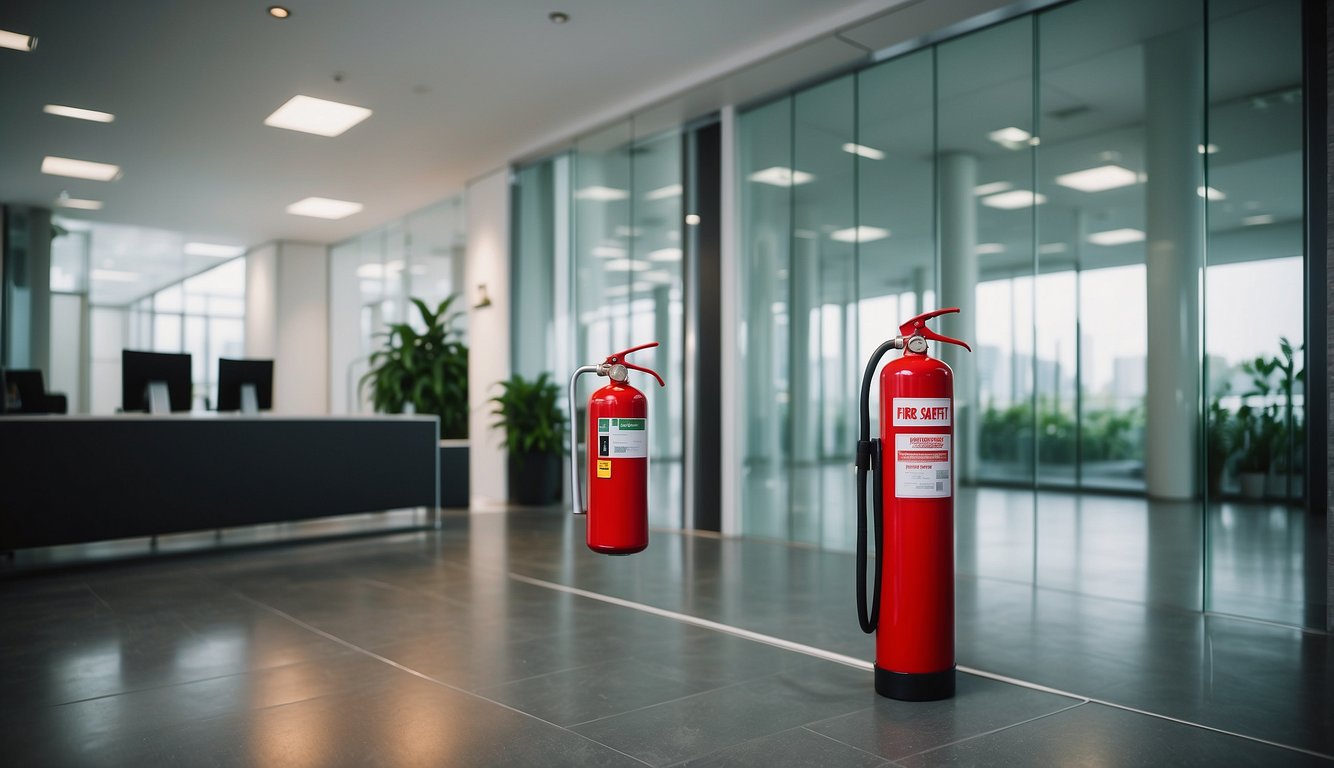
Singapore has a long history of fire safety legislation, with the Fire Safety Act being first enacted in 1993. Since then, there have been several amendments and updates to the Act to ensure that it remains relevant and effective in addressing fire safety concerns. Understanding the Fire Safety Act is crucial for building owners, managers, and occupants to ensure that they are compliant with the regulations and are taking appropriate measures to prevent fires and protect lives and property.
Key Takeaways
- Fire safety is an essential aspect of building management in Singapore, and compliance with regulations is crucial to ensure the safety of lives and property.
- The Fire Safety Act is a key piece of legislation in Singapore that outlines the requirements for fire safety management in buildings.
- Building owners, managers, and occupants must understand the Fire Safety Act and take appropriate measures to prevent fires and ensure compliance with regulations.
History of Fire Safety Legislation in Singapore
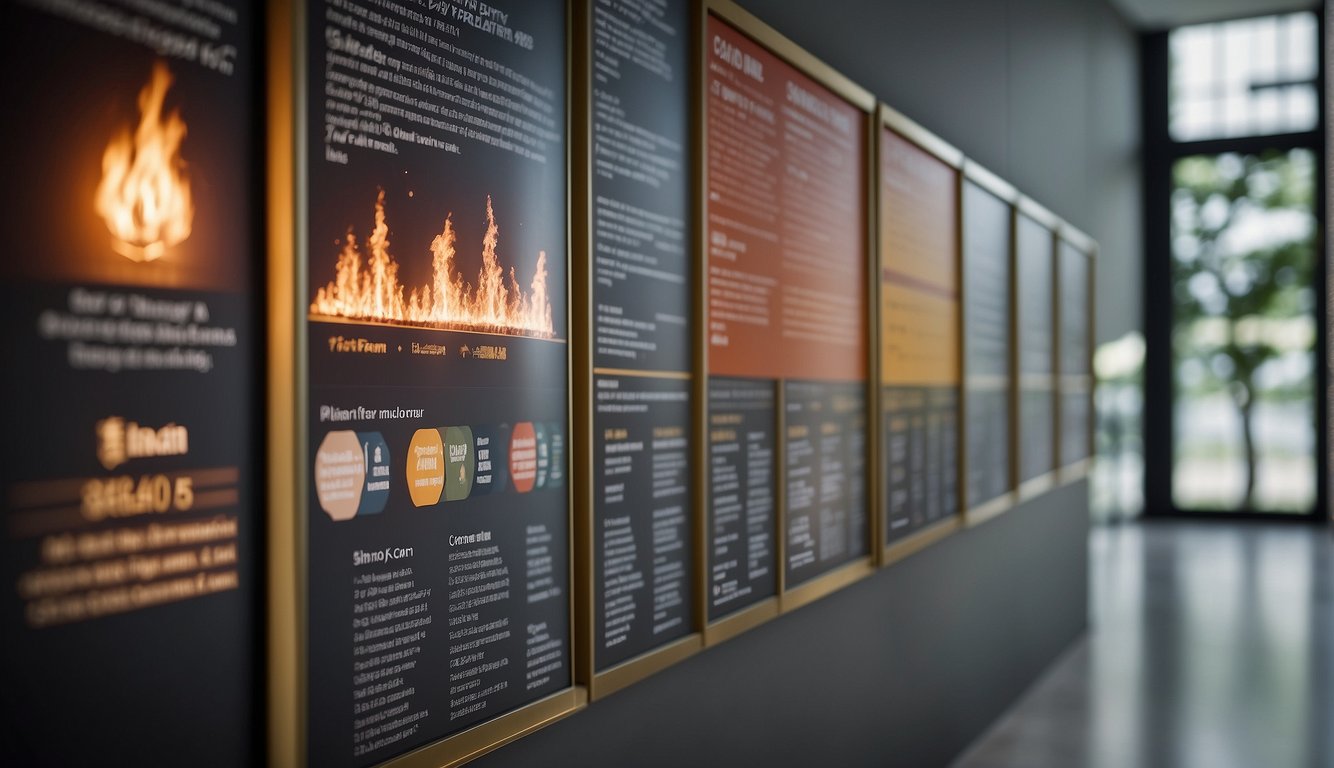
If you are interested in the history of fire safety legislation in Singapore, you will find that it is a story of evolution. Over the years, Singapore has implemented various fire safety regulations to ensure the safety of its citizens and properties. In this section, we will explore the history of fire safety legislation in Singapore.
The Fire Safety Act 1993
The Fire Safety Act 1993 is the primary legislation governing fire safety in Singapore. The act was enacted on 8 April 1994, with the aim of making provisions for fire safety and for matters connected therewith. The act has undergone several revisions since then, with the latest version published on 31 December 2021.
Under the Fire Safety Act 1993, the Singapore Civil Defence Force (SCDF) is responsible for enforcing fire safety regulations in Singapore. The act sets out the requirements for fire safety in buildings, including the installation of fire safety equipment, the conduct of fire drills, and the maintenance of fire safety systems.
Evolution of Fire Regulations
The Fire Safety Act 1993 was not the first piece of fire safety legislation in Singapore. In fact, fire safety regulations have been in place in Singapore since the colonial era. In the early 20th century, the Singapore Fire Brigade was established to fight fires in the city.
Over the years, fire safety regulations in Singapore have evolved to keep up with the changing needs of the city. In 1961, the Fire Services Act was enacted to establish the Singapore Fire Service. The act was revised in 1985, and the Singapore Fire Service was renamed the Singapore Civil Defence Force.
Since then, fire safety regulations in Singapore have continued to evolve. In 2013, the Fire Safety (Amendment) Act was passed to enhance fire safety measures in buildings. The act introduced new requirements for the installation of fire safety equipment and the conduct of fire drills.
In conclusion, fire safety regulations in Singapore have come a long way over the years. From the establishment of the Singapore Fire Brigade in the early 20th century to the enactment of the Fire Safety Act 1993, Singapore has made significant progress in ensuring the safety of its citizens and properties.
Understanding the Fire Safety Act
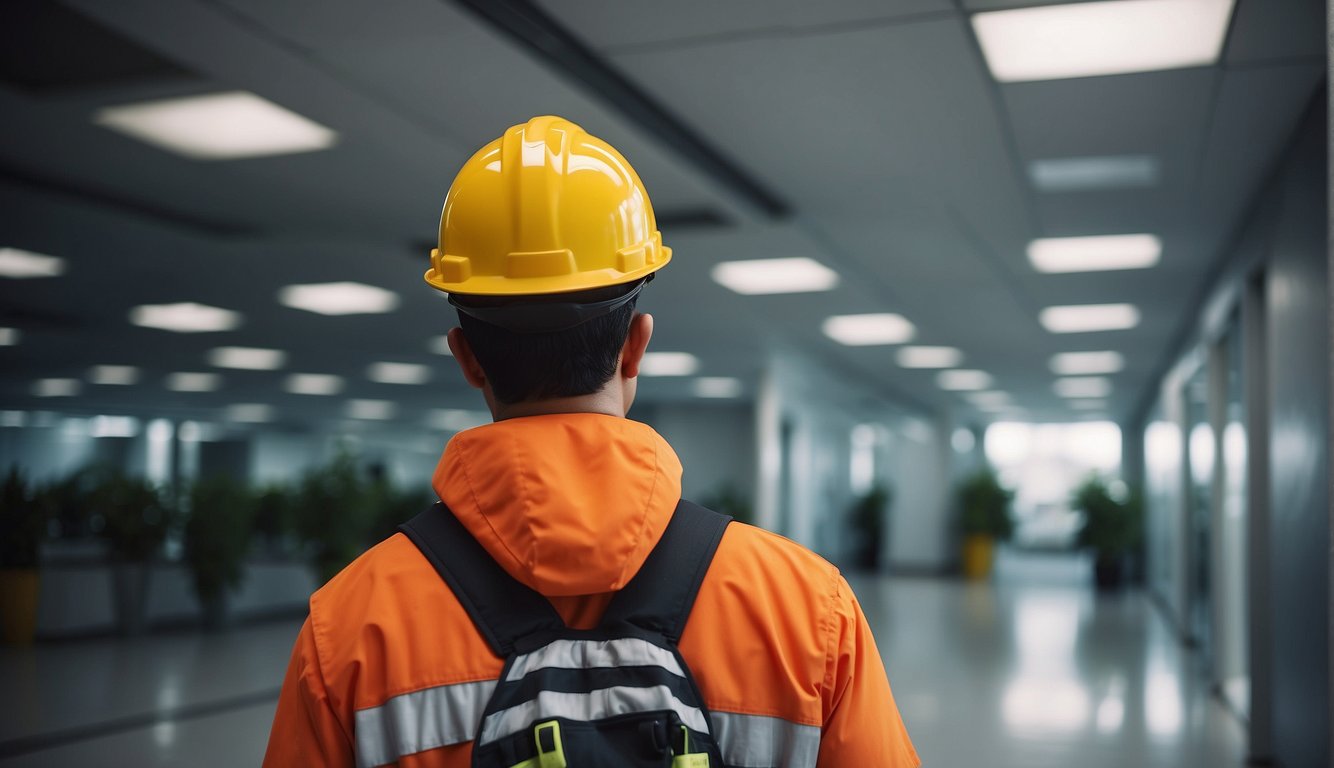
If you own or occupy a building in Singapore, it is essential to understand the Fire Safety Act. This act outlines the regulations and requirements for fire safety in buildings, and it is enforced by the Singapore Civil Defence Force (SCDF).
Key Provisions
The Fire Safety Act covers a wide range of provisions, including the following:
- Fire safety requirements for buildings
- Fire safety plans and inspections
- Fire safety equipment and systems
- Fire safety training and emergency preparedness
As an owner or occupier of a building, it is your responsibility to ensure that your building complies with these provisions. Failure to comply with the Fire Safety Act can result in penalties and legal action.
Roles and Responsibilities
Under the Fire Safety Act, the Commissioner of the SCDF is responsible for enforcing the act and ensuring that buildings comply with the regulations. As an owner or occupier, it is your responsibility to ensure that your building meets the fire safety requirements outlined in the act.
Owners and occupiers must also appoint a Fire Safety Manager (FSM) to oversee the fire safety measures in the building. The FSM is responsible for ensuring that the building’s fire safety systems are in working order, conducting fire drills and training, and maintaining fire safety records.
Enforcement and Penalties
The SCDF takes the enforcement of the Fire Safety Act seriously. If your building is found to be in violation of the act, you may face penalties, fines, or legal action. Penalties can range from fines of up to $10,000 to imprisonment for up to 12 months.
In addition to penalties, the SCDF may also issue Fire Hazard Abatement Notices (FHANs) to owners or occupiers of buildings that are found to be in violation of the Fire Safety Act. FHANs require the recipient to take immediate action to address the fire hazard.
In summary, the Fire Safety Act is a critical piece of legislation that outlines the requirements for fire safety in buildings in Singapore. As an owner or occupier, it is your responsibility to ensure that your building complies with the act and that you have appointed a qualified FSM to oversee fire safety measures. Failure to comply with the act can result in penalties and legal action.
Fire Safety Management

Fire safety management is an essential part of building management in Singapore. As a building owner or occupier, you have a legal obligation to ensure that your building is safe from fire hazards. This is where the role of a Fire Safety Manager (FSM) comes in.
Duties of a Fire Safety Manager
The primary responsibility of an FSM is to ensure that the building is compliant with the Fire Code and other relevant regulations. This includes conducting regular fire risk assessments, identifying potential fire hazards, and implementing appropriate fire safety measures.
As an FSM, you are also responsible for ensuring that all occupants of the building are aware of the fire safety procedures and protocols. This includes conducting regular fire drills and training sessions, as well as providing guidance on how to evacuate the building in the event of a fire.
Fire Drills and Training
Fire drills and training are an essential part of fire safety management. Regular fire drills help to ensure that all occupants of the building are familiar with the evacuation procedures and can evacuate the building safely and efficiently in the event of a fire.
During fire drills, occupants should be instructed to follow the emergency evacuation procedures, which should be clearly posted throughout the building. These procedures should include instructions on how to evacuate the building, where to assemble outside, and who to contact in the event of an emergency.
In addition to regular fire drills, it is also important to provide regular fire safety training to all occupants of the building. This training should cover topics such as fire prevention, fire safety procedures, and how to use fire extinguishers.
Overall, fire safety management is an essential part of building management in Singapore. By ensuring that your building is compliant with the Fire Code and other relevant regulations, conducting regular fire drills and training sessions, and appointing a qualified FSM, you can help to ensure that your building is safe from fire hazards.
Building Requirements and Compliance
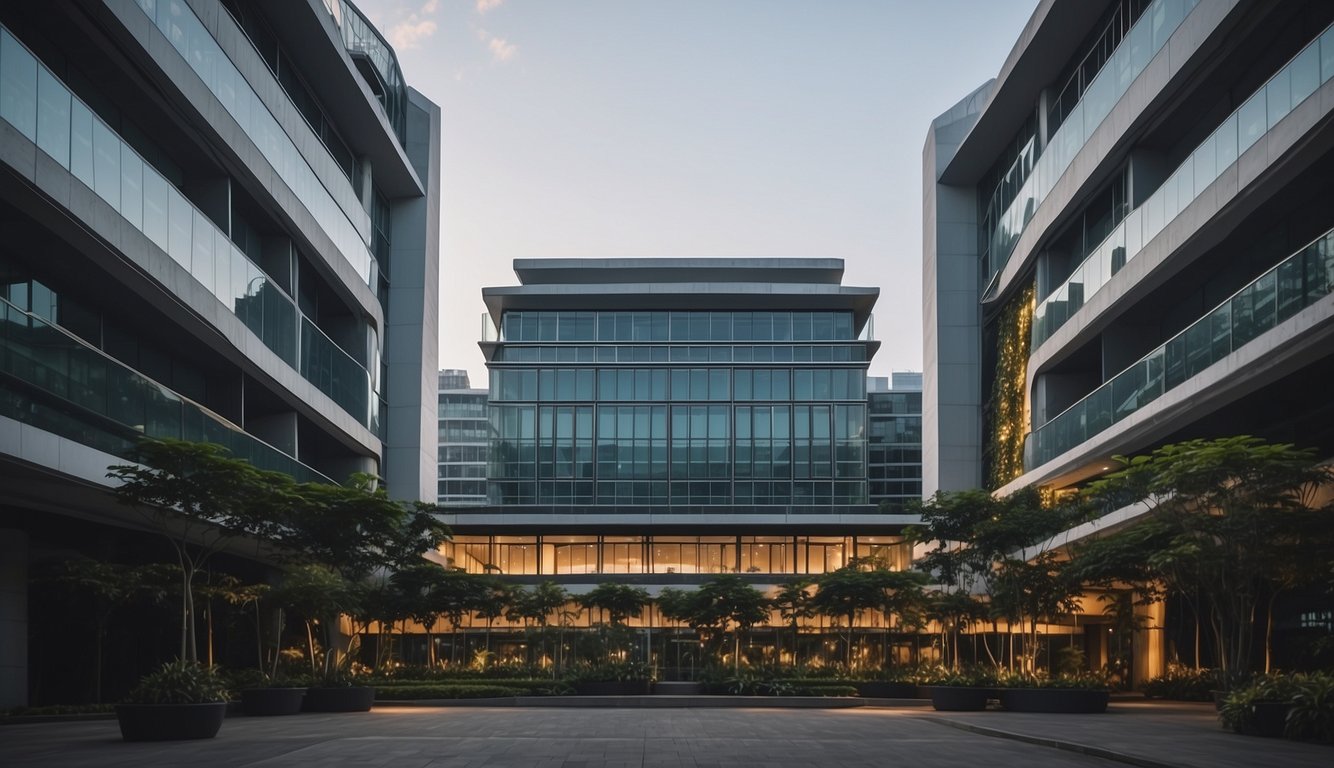
Ensuring that buildings are designed and constructed according to fire safety regulations is crucial in preventing fires and protecting people’s lives and property. In Singapore, the Fire Code is the main document that sets out the minimum fire safety requirements for buildings.
Fire Code and Building Design
The Fire Code covers a wide range of topics, including fire safety management, means of escape, fire protection systems, and fire safety requirements for specific types of buildings. When designing a building, you must ensure that it complies with the Fire Code requirements. Failure to comply with the Fire Code may result in fines, imprisonment, or both.
Compliance for Industrial Buildings
Industrial buildings are subject to additional fire safety requirements, such as the provision of fire-rated walls and floors, fire doors, and automatic fire suppression systems. These requirements are necessary because industrial buildings often contain hazardous materials and processes that can increase the risk of fire.
Fire Protection Systems in Public Buildings
Public buildings, such as hospitals, schools, and shopping malls, must have adequate fire protection systems in place to ensure the safety of occupants. These systems may include fire sprinklers, fire alarms, smoke detectors, and emergency lighting. Regular maintenance and testing of these systems are also required to ensure their reliability in the event of a fire.
In conclusion, compliance with fire safety regulations is essential in ensuring the safety of buildings and their occupants. By following the Fire Code and other relevant regulations, you can help prevent fires and minimize the damage they cause.
Fire Safety Measures and Equipment
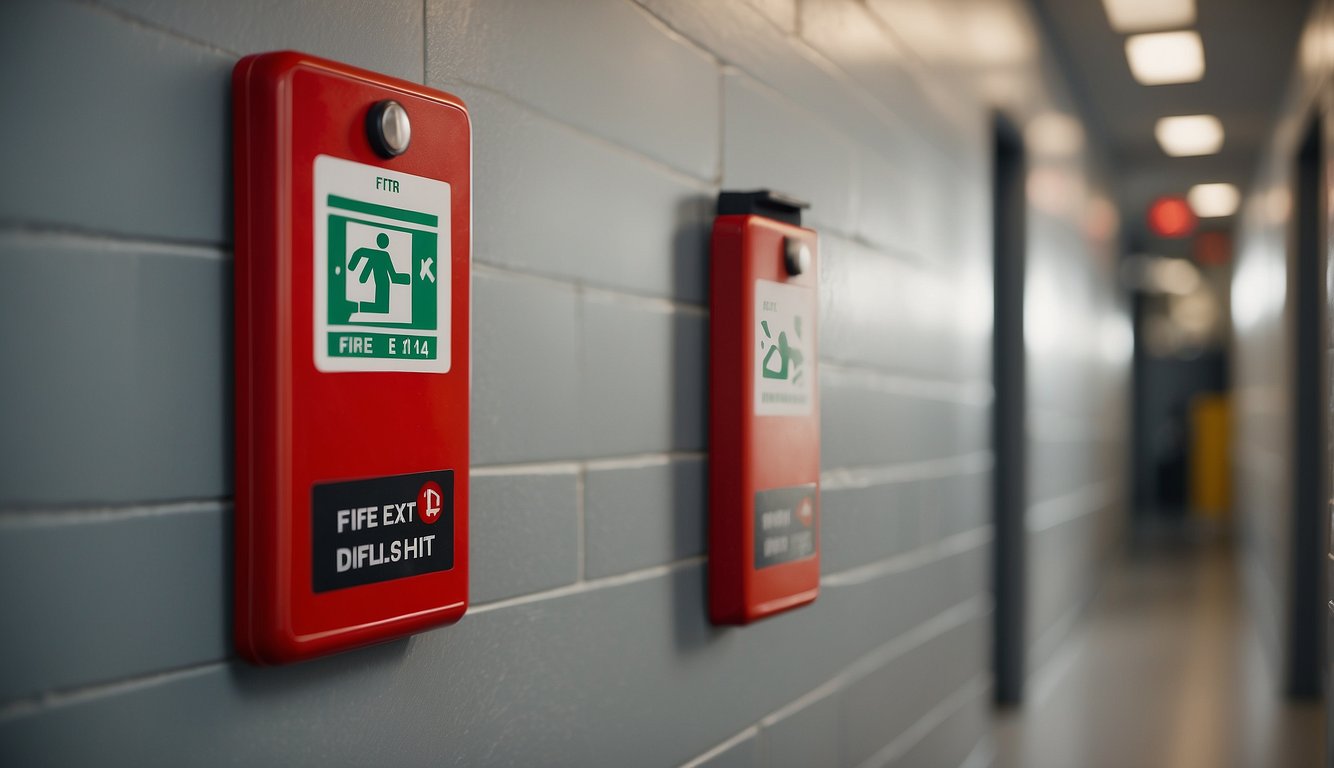
When it comes to fire safety in Singapore, there are a number of measures and equipment that you need to be aware of. In this section, we’ll take a closer look at some of the key areas you need to focus on to ensure you are prepared for any fire emergency.
Personal Protective Equipment (PPE)
Personal Protective Equipment, or PPE, is essential for anyone working in an environment where there is a risk of fire. This includes firefighters, but also anyone working in factories, construction sites, or other high-risk areas. PPE includes items such as fire-resistant clothing, helmets, gloves, and boots. It is important to ensure that your PPE is in good condition and fits properly, as this will help to protect you in the event of a fire.
Regulated Fire Safety Products
There are a number of regulated fire safety products that are essential for any building in Singapore. These include fire extinguishers, smoke detectors, and sprinkler systems. It is important to ensure that your building has the correct number and type of fire safety products installed, and that they are regularly serviced and maintained. This will help to ensure that your building is as safe as possible in the event of a fire.
Fire Safety Works and Systems
In addition to PPE and regulated fire safety products, there are a number of other fire safety measures and equipment that you need to be aware of. These include fire doors, fire-resistant walls and ceilings, and fire escape routes. It is important to ensure that your building has the correct fire safety systems and equipment in place, and that they are regularly checked and maintained. This will help to ensure that your building is as safe as possible in the event of a fire.
Overall, fire safety is a critical issue in Singapore, and it is essential that you take the necessary steps to protect yourself and your building. By ensuring that you have the correct PPE, regulated fire safety products, and fire safety works and systems in place, you can help to minimise the risk of a fire and ensure that everyone in your building is as safe as possible.
Certificates and Permits
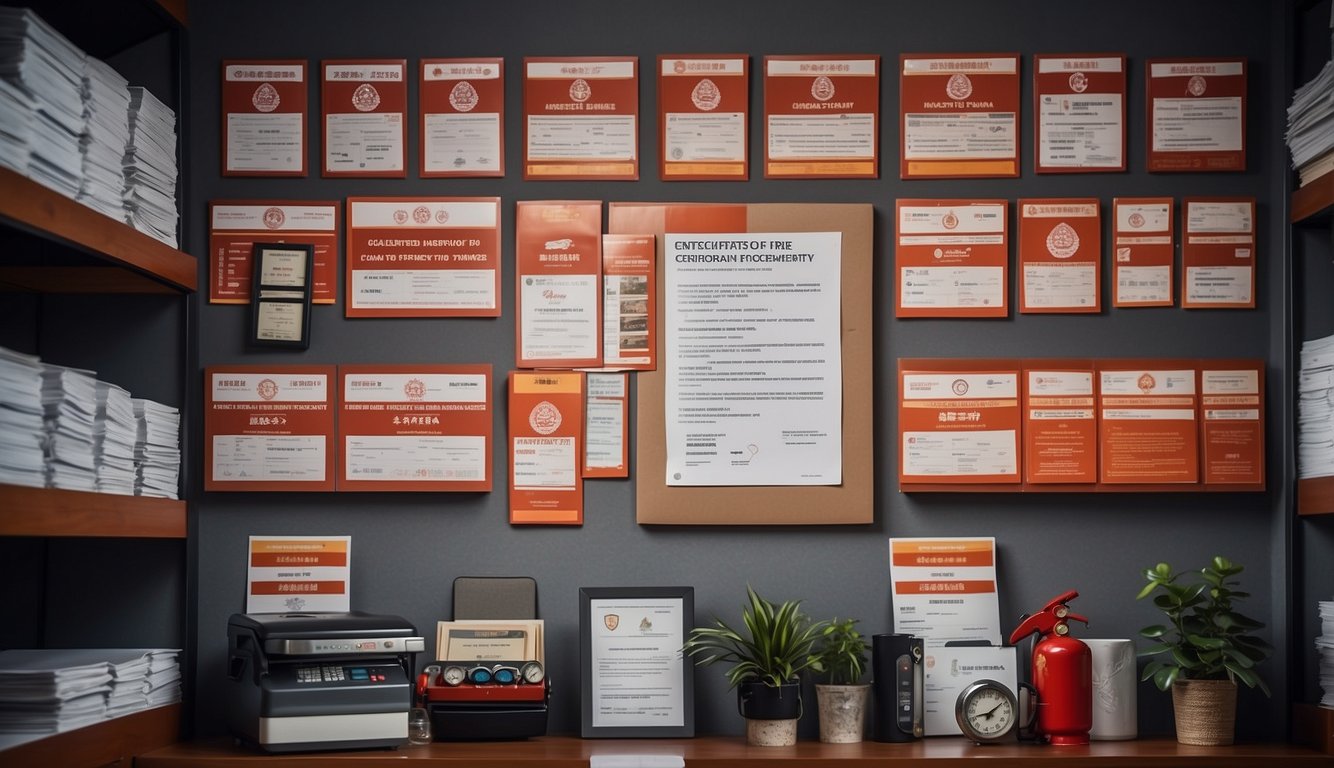
Fire safety is of utmost importance in Singapore, and as a result, there are strict regulations in place to ensure that buildings are safe for occupants. Certificates and permits are required to ensure compliance with these regulations.
Fire Certificate and Compliance
Under Section 35 of the Fire Safety Act 1993, the owner or occupier of any public building such as offices, hospitals, shopping complexes, industrial buildings, and private residential buildings that fall within certain criteria is required to apply for and obtain a Fire Certificate (FC) [1]. This certificate confirms that the building has been inspected and meets the fire safety requirements set out by the Singapore Civil Defence Force (SCDF).
To obtain the FC, the owner or occupier must engage a Qualified Person (QP) who will conduct an inspection of the building and its fire safety systems. The QP will then submit the application for the FC to the SCDF. Once the application is approved, the FC will be issued.
It is important to note that the FC is valid for three years and must be renewed before it expires. Failure to obtain or renew the FC can result in fines or even imprisonment [1].
Temporary Occupation Permits and Certificates of Completion
In addition to the FC, buildings in Singapore must also obtain a Temporary Occupation Permit (TOP) or a Certificate of Statutory Completion (CSC) before they can be occupied [2]. The TOP is issued by the Building and Construction Authority (BCA) and confirms that the building is safe for occupation. The CSC, on the other hand, is issued by the SCDF and confirms that the building meets the fire safety requirements.
To obtain the TOP or CSC, the owner or occupier must engage a QP who will conduct inspections of the building and its systems. The QP will then submit the application for the TOP or CSC to the relevant authority. Once the application is approved, the TOP or CSC will be issued.
It is important to note that the TOP is valid for three years, while the CSC is valid for two years. Both permits must be renewed before they expire. Failure to obtain or renew the TOP or CSC can result in fines or even imprisonment [2].
In conclusion, obtaining the necessary certificates and permits is crucial for ensuring fire safety compliance in Singapore. It is important to engage a QP to conduct inspections and submit applications to the relevant authorities to ensure that the process goes smoothly. By doing so, you can ensure that your building is safe for occupants and avoid any legal repercussions.
[2] BCA: Temporary Occupation Permit
Legal Implications and Misrepresentation
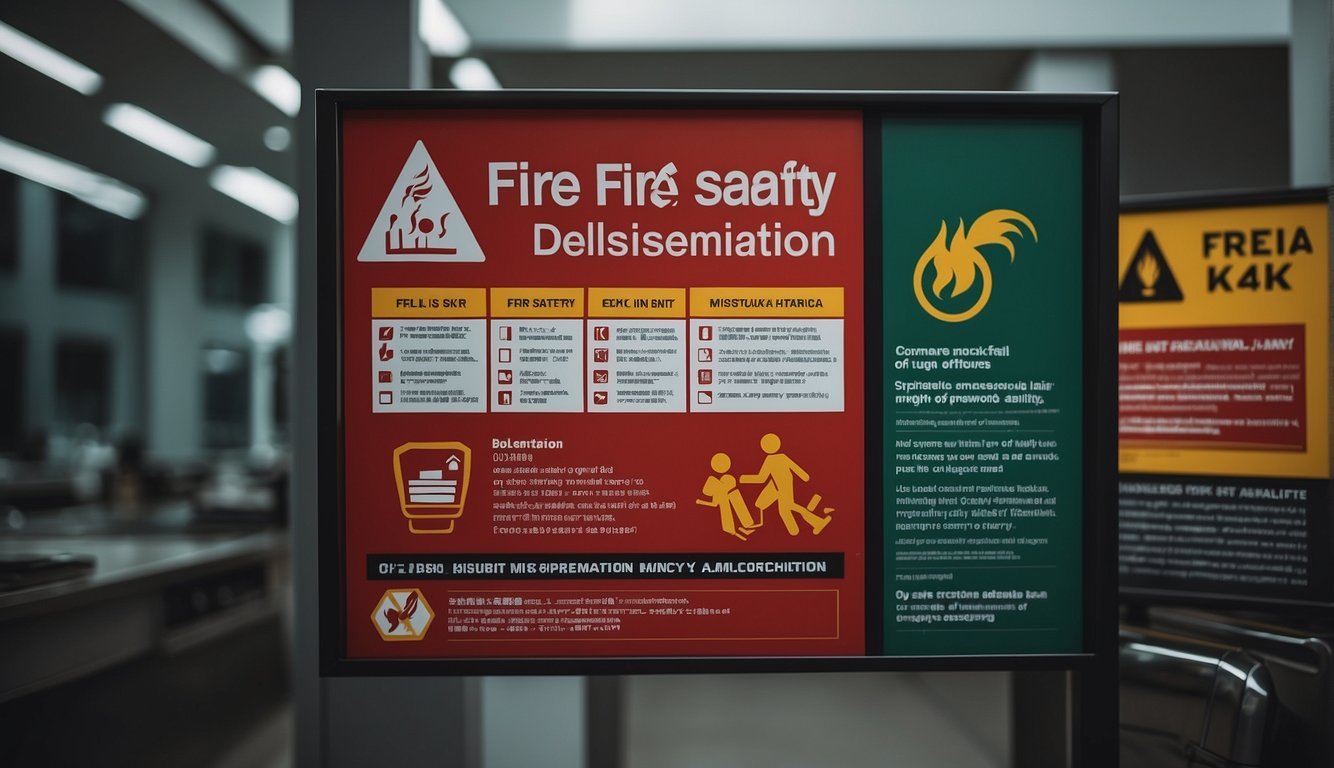
Fire safety is a serious matter in Singapore, and non-compliance can lead to severe penalties. As a business owner or property manager, it is your responsibility to ensure that your building is equipped with compliant fire safety products and that your staff is trained in fire safety procedures.
Penalties for Non-Compliance
Under the Fire Safety Act 1993, failure to comply with fire safety regulations can result in fines of up to $200,000 and/or imprisonment for up to two years. In addition, the Singapore Civil Defence Force (SCDF) has the power to issue Fire Hazard Abatement Orders (FHAOs) requiring the rectification of any fire hazards found on the premises.
To avoid these penalties, it is essential to ensure that your building is compliant with all fire safety regulations, including the installation of fire alarms, sprinkler systems, and fire extinguishers. Regular maintenance and testing of these systems are also required to ensure that they are in good working order.
Misrepresentation of Fire Safety Products
Misrepresentation of fire safety products can also lead to legal implications. In a recent case, Fire Safety & Prevention (SG) was ordered to cease unfair trade practices by the Competition and Consumer Commission of Singapore (CCCS) after it was found to have made false claims about the effectiveness of its fire extinguishers.
As a business owner or property manager, it is essential to ensure that any fire safety products you purchase are compliant with Singaporean standards and have been tested and certified by reputable organizations. Misrepresentation of fire safety products can not only lead to legal implications but also put the safety of your staff and customers at risk.
In conclusion, it is crucial to take fire safety seriously and ensure that your building is compliant with all fire safety regulations. Failure to do so can result in severe penalties, including fines and imprisonment. Additionally, misrepresentation of fire safety products can lead to legal implications and put the safety of your staff and customers at risk.
Innovations in Fire Safety
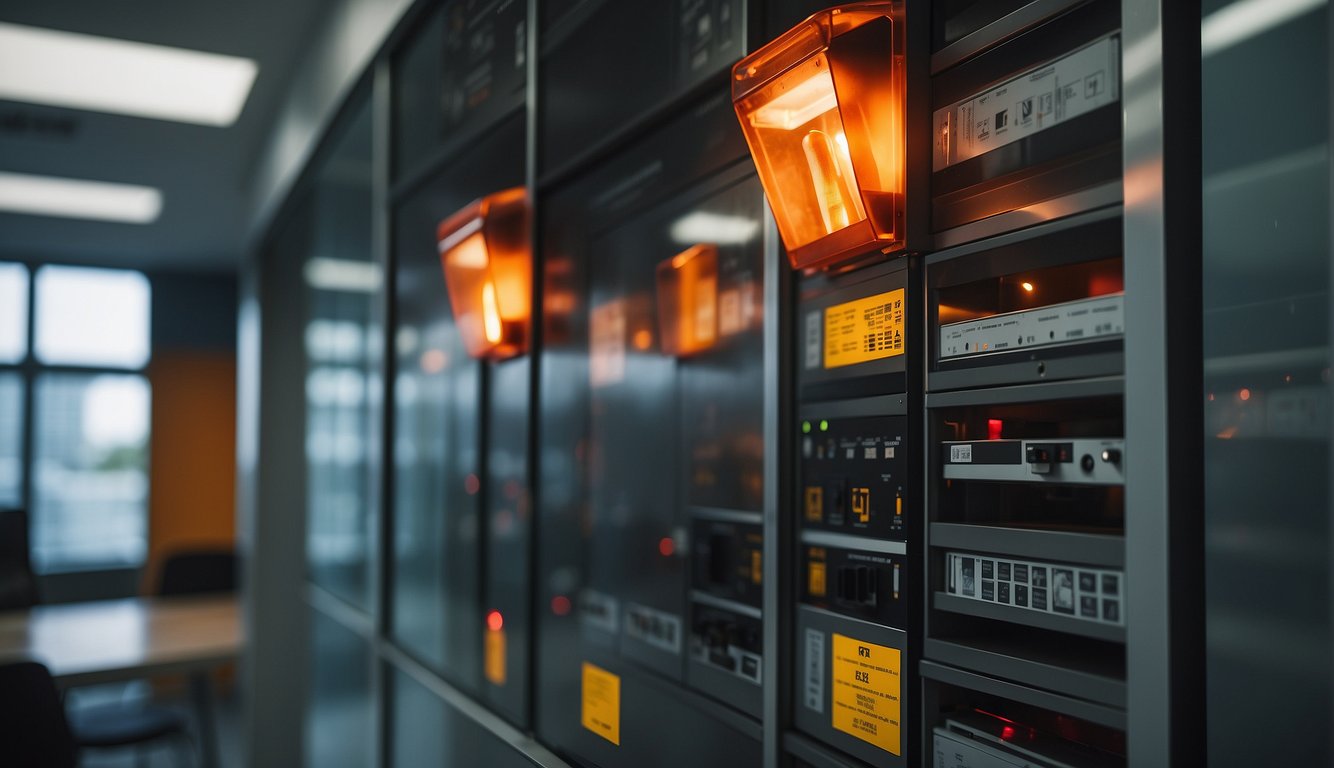
Fire safety is a critical aspect of building design and management in Singapore. Over the years, there have been several innovations in fire safety that have helped to improve the safety of buildings and their occupants. In this section, we will explore some of these innovations.
Alternative Solutions and Accreditation
One of the most significant innovations in fire safety is the development of alternative solutions. These solutions provide an alternative to the prescriptive fire safety requirements set out in the Building Code. They allow building owners and designers to propose alternative solutions that achieve the same or better level of fire safety as the prescriptive requirements.
To ensure that these alternative solutions are safe and effective, there are accredited certification bodies that assess and certify them. These bodies ensure that the alternative solutions meet the relevant fire safety standards and are appropriate for the specific building.
Advancements in Fire Safety Equipment
Advancements in fire safety equipment have also been significant in improving fire safety in Singapore. Fire safety equipment such as fire extinguishers, smoke detectors, and sprinkler systems have been around for many years. However, advancements in technology have made these systems more effective and efficient.
For example, there are now smart smoke detectors that can detect smoke and carbon monoxide and send alerts to your phone. These detectors can also be integrated with other smart home devices, such as smart thermostats and lighting, to provide a more comprehensive fire safety system.
Similarly, there are now high-pressure water mist systems that use less water than traditional sprinkler systems. These systems are more effective in suppressing fires and are also more environmentally friendly.
In conclusion, innovations in fire safety have made buildings in Singapore safer for their occupants. Alternative solutions and accredited certification bodies have given building owners and designers more flexibility in achieving fire safety requirements. Advancements in fire safety equipment have made these systems more effective and efficient. As a result, you can feel more confident that your building is equipped to handle a fire emergency.
Emergency Response and Preparedness
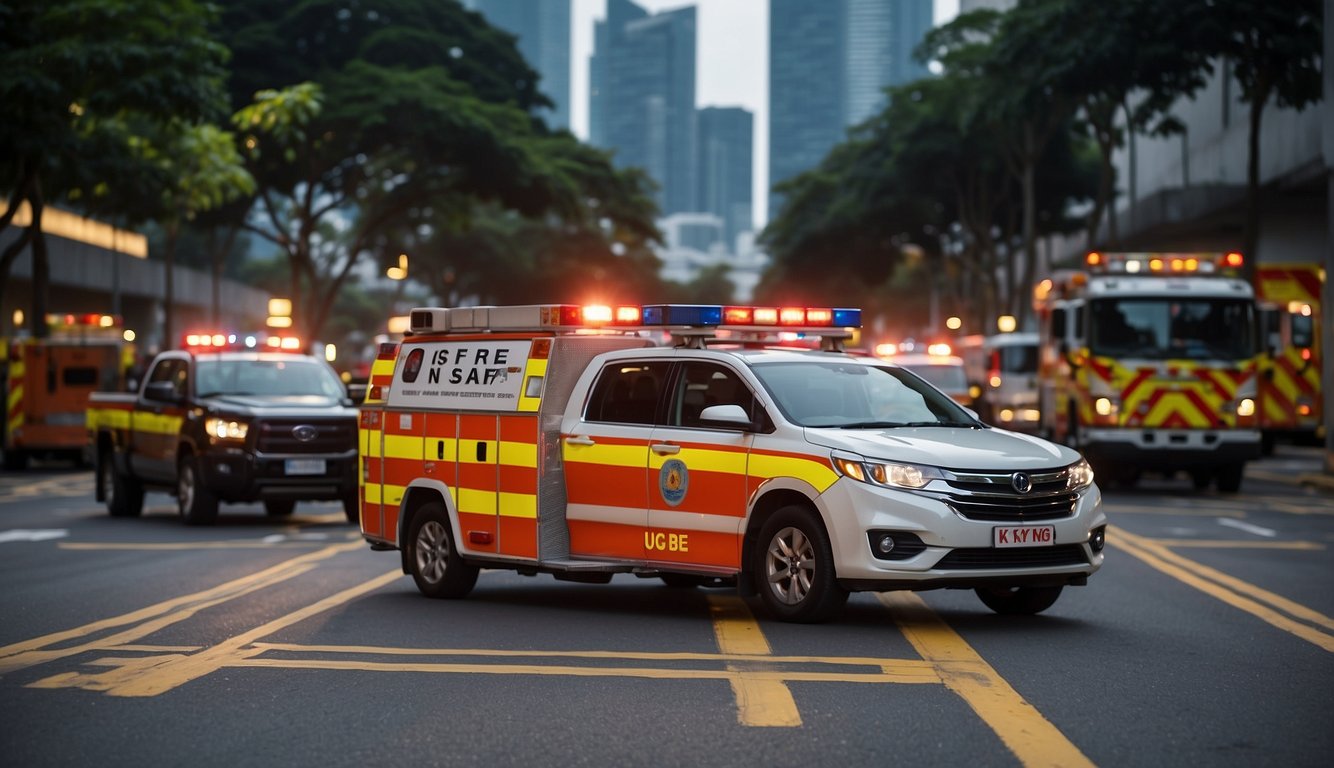
Fire safety is a critical aspect of building safety in Singapore. In case of a fire, the Singapore Civil Defence Force (SCDF) plays a crucial role in responding to the emergency and ensuring public safety. Here are some important things you should know about emergency response and preparedness in Singapore.
Role of the Singapore Civil Defence Force
The SCDF is responsible for providing 24-hour emergency response services in Singapore. This includes firefighting, rescue, and emergency medical services. The SCDF also formulates and enforces regulations on fire safety and civil defence shelter matters. They work closely with other agencies such as the Police and the Land Transport Authority to ensure a coordinated response to emergencies.
Emergency Protocols and Fire Engines
In case of a fire, it is important to follow the emergency protocols and procedures. If you discover a fire, activate the fire alarm and call the SCDF immediately. When evacuating the building, use the nearest exit and do not use the lift. If the fire is small and you have been trained to use a fire extinguisher, you can try to put out the fire. However, if the fire is too large or spreading quickly, evacuate immediately.
When the SCDF arrives at the scene, they will assess the situation and determine the best course of action. They will also deploy fire engines and other equipment to extinguish the fire and rescue any trapped individuals. SCDF fire engines are equipped with a range of tools and equipment such as water pumps, hoses, and ladders to help them fight fires and rescue people.
In conclusion, being prepared for a fire emergency is crucial in ensuring public safety. The SCDF plays a vital role in responding to emergencies and ensuring that the public is safe. By following the emergency protocols and procedures, and working together with the SCDF, we can prevent fires and keep our community safe.
Public Awareness and Education
Fire safety education is an essential component in preventing fires and minimizing their impact. The Singapore Civil Defence Force (SCDF) has developed various programs and campaigns to educate the public on fire safety and emergency preparedness.
Community Involvement
Community involvement is a crucial aspect of fire safety education. The SCDF encourages individuals and organizations to take an active role in promoting fire safety in their communities. You can participate in fire safety awareness programs and volunteer for community emergency preparedness programs. By doing so, you can help raise awareness about fire safety and emergency preparedness and help prevent fires in your community.
Fire Safety Campaigns
The SCDF has launched various fire safety campaigns to increase public awareness of fire safety. These campaigns aim to educate the public on the importance of fire safety and emergency preparedness. Some of the campaigns include the “Fire Safety Ambassador” program, which trains volunteers to promote fire safety in their communities, and the “Fire Safety Check” program, which provides free fire safety inspections for households and businesses.
The SCDF also conducts regular fire safety training programs for individuals and organizations. These programs provide participants with the knowledge and skills necessary to prevent fires and respond to emergencies effectively. The training programs cover various topics such as fire safety awareness, evacuation procedures, and the proper use of fire extinguishers.
Overall, public awareness and education are essential in preventing fires and minimizing their impact. By taking an active role in promoting fire safety in your community and participating in fire safety education programs, you can help create a safer and more prepared society.
Frequently Asked Questions
What are the top strategies to prevent fires in our homes and workplaces?
Fire prevention is crucial to ensure the safety of your home or workplace. Some of the top strategies to prevent fires include:
- Ensure that all electrical appliances are turned off when not in use.
- Avoid overloading electrical sockets.
- Keep flammable materials away from heat sources.
- Install smoke detectors and test them regularly.
- Develop and practice a fire evacuation plan.
Which fire protection equipment is essential for every building in Singapore?
Fire protection equipment is essential for every building in Singapore. Some of the essential fire protection equipment includes:
- Fire extinguishers
- Smoke detectors
- Fire alarms
- Fire sprinkler systems
- Fire hoses
How can one easily report a potential fire hazard to the SCDF?
To report a potential fire hazard, you can call the Singapore Civil Defence Force (SCDF) at 995 or use the mySCDF mobile app. You can also visit the SCDF website to submit a feedback form.
What must-do actions should you take if a fire breaks out in your residence?
If a fire breaks out in your residence, follow these must-do actions:
- Alert everyone in the building and evacuate immediately.
- Call the SCDF at 995.
- Use a fire extinguisher if the fire is small and manageable.
- Close all doors and windows to prevent the spread of fire.
- Do not use the lift.
- Wait for the SCDF to arrive and follow their instructions.
What qualifications are required to become a certified Fire Safety Manager in Singapore?
To become a certified Fire Safety Manager in Singapore, you must have a valid Fire Safety Manager Certificate issued by the SCDF. You must also meet the minimum educational and experience requirements set by the SCDF.
Where can one find a comprehensive list of fire protection service providers in Singapore?
You can find a comprehensive list of fire protection service providers in Singapore on the SCDF website. The list includes companies that provide fire safety equipment, fire protection systems, and fire protection consultancy services.




